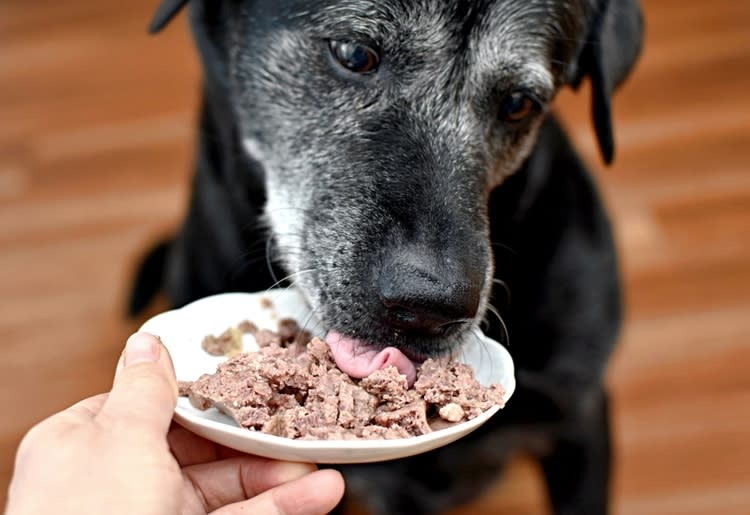
As our pets enter their golden years, they deserve specialized care to match the unconditional love they've given us. While caring for a senior pet brings unique challenges, working with our best pet insurance providers early can help manage costs and ensure quality care.
This article will guide you through the essential aspects of senior pet care, from health monitoring to comfort, and help your faithful companion thrive in their later years.
Understanding the Needs of Senior Pets
Just as humans age differently, pets reach their senior years at varying times. Smaller dog breeds might not be considered senior until age 10-11, while larger breeds can reach this milestone as early as 6-7 years old. Cats typically enter their senior phase around 10 years, though individual health and genetics play important roles.
As your pet gets older, you'll likely notice several changes in their behavior and habits. Keep an eye out for these common signs of aging:
Mobility and movement: Your pet might take longer to get up after naps or be less eager to climb stairs. You might notice them being more careful about jumping onto furniture or moving slower during walks.
Eating habits: Their appetite might change – some pets become picky eaters while others start eating more. Watch for any unexpected weight gain or loss.
Sleep and energy levels: Your senior pet will probably sleep more and may not have the same energy for long play sessions. They might prefer shorter bursts of activity with more rest breaks.
Everyday behavior: You might notice your pet getting confused about familiar things or being more anxious than usual. Some become extra cuddly, while others might need more quiet time.
Making Veterinary Care a Priority
Regular veterinary check-ups become increasingly important as pets age. They help catch potential health issues before they become serious problems. Your senior pet should visit the vet at least twice a year for thorough health evaluations.
Essential health screenings: Senior wellness checks include comprehensive blood work, heart assessments, and dental evaluations. Your vet will also screen for common age-related conditions like arthritis, kidney disease, and diabetes.
Diagnostic testing: These visits often involve specialized tests to monitor your pet's organ function and overall health. Regular blood panels and urinalysis can detect early signs of illness when they're most treatable.
Preventive care updates: While vaccinations remain important, your vet might adjust the schedule based on your pet's age and lifestyle. They'll also ensure your pet stays protected against parasites with appropriate preventive medications.
Tailoring Nutrition for Senior Pets
As pets age, their nutritional needs change significantly. A diet tailored to senior pets can help manage weight, support joint health, and maintain muscle mass as they grow older.
Senior-specific diets: Quality foods for older pets typically contain higher-quality proteins to maintain muscle mass and controlled fat content to prevent weight gain. Look for options that include added glucosamine and chondroitin for joint support.
Managing weight and hydration: Older pets often become less active, making them prone to weight gain. Monitor portions carefully and ensure they can access fresh water in several places around your home. Some seniors also benefit from wet food to increase moisture intake.
Beneficial supplements: Joint supplements with glucosamine can improve mobility, while omega-3 fatty acids support brain and joint health. Consider specialized vitamins designed for seniors to help maintain their overall well-being and address age-related changes.
Exercise and Mobility
While senior pets may slow down naturally, maintaining an appropriate level of physical activity remains crucial for their health and happiness. Here’s what you can try:
Activity modifications: Keep your senior pet moving with gentler forms of exercise. Short, frequent walks often work better than long sessions and low-impact activities like swimming can help maintain fitness without stressing joints.
Home adaptations: Make your home more accessible for your aging pet. Consider adding carpet runners on slippery floors, ramps for stairs, and raised food bowls. Orthopedic beds in favorite spots can provide crucial joint support.
Exercise timing: Schedule activities for when your pet is most energetic, typically after their morning rest or early evening. Break activities into shorter sessions throughout the day rather than one long period.
Weather considerations: Protect senior pets from extreme temperatures during exercise. Hot weather can be especially taxing, while cold weather might aggravate joint pain.
Movement changes: Watch for signs your pet needs extra help, such as difficulty getting up, reluctance to use stairs, or hesitation before jumping. These changes often indicate it's time to adjust their environment or consult your vet about mobility support.
Cognitive Health and Mental Stimulation
Understanding Cognitive Decline
Senior pets might initially show mild confusion or anxiety in familiar settings. As these changes progress, they may experience disrupted sleep patterns, increased vocalization, and difficulty with routine tasks like finding their food bowl or following basic commands.
Ways to Keep Your Pet Mentally Engaged
Mental stimulation is crucial for maintaining cognitive function in senior pets. Here are several effective ways to keep their minds active:
Puzzle games and toys: Use food-dispensing toys and simple puzzle games that reward your pet with treats. These encourage problem-solving while providing entertainment.
Training sessions: Continue gentle training with basic commands or teach new simple tricks. Keep sessions short and positive to avoid frustration.
Enrichment activities: Introduce controlled new experiences like supervised exploration of a new room or gentle nose work games with hidden treats.
Social interaction: Maintain regular, calm playdates with familiar pets and encourage gentle interaction with family members.
Creating a supportive space: Help your pet navigate their environment by maintaining consistent routines and clear paths to important resources. Keep their living space familiar yet enriching, with comfortable rest areas and easy access to necessities.
Grooming and Comfort
As pets age, their grooming and comfort needs evolve. You can follow these tips to ensure your senior pet is comfortable:
Use soft brushes to manage shedding and maintain coat health
Keep grooming sessions short and gentle
Perform regular nail trims to prevent mobility issues
Brush carefully to detect any skin changes or unusual growths
Creating Comfort Zones
Create multiple cozy resting areas with orthopedic bedding to support aging joints. Choose warm, draft-free locations that are easily accessible. Soft, supportive beds in quiet areas help your senior pet feel secure and comfortable throughout the day.
Skin and Coat Monitoring
Perform regular skin checks during grooming. Look for changes in coat texture, unusual lumps, or skin irritations. Early detection of unusual signs can help address potential health issues quickly and keep your senior pet feeling their best.
Managing Pain and Health Issues
Recognizing Pain and Discomfort
Reduced activity: Watch for reluctance to move, play, or engage in previously enjoyed activities
Social withdrawal: Notice if they seem less interested in family interactions or appear more isolated
Comfort challenges: Pay attention to difficulty finding a comfortable resting position or frequent position changes
Behavioral changes: Look for alterations in eating, drinking, or bathroom habits that may indicate underlying discomfort
Treatment Planning
Work closely with your vet to develop a comprehensive care plan tailored to your senior pet's needs. This may include a combination of pain medications, joint supplements, and alternative therapies designed to manage discomfort and maintain mobility.
Common Health Challenges
Our aging pets can face a variety of health challenges that need our proactive care, such as:
Arthritis and joint deterioration
Dental disease and oral health issues
Vision and hearing changes
Organ function decline
Reduced immune system effectiveness
Preparing for the End of Life
Discussing final stages: Recognize the signs of declining quality of life through open communication with your veterinarian. Consider euthanasia when you can’t manage the pain effectively, your pet loses interest in their favorite activities, or their basic functions become increasingly difficult.
Comfort and care options: Explore supportive care strategies to prioritize your pet's well-being. Focus on creating moments of peace and comfort, ensuring your companion feels loved during their most vulnerable time.
Making difficult decisions: Trust your understanding of your pet's needs. Your goal is to prevent unnecessary suffering while honoring the bond you've shared. Seek support from your vet and loved ones during this challenging time.
Conclusion
Caring for a senior pet requires attention, patience, and adaptability, but the love and companionship they continue to provide make it all worthwhile. By understanding their changing needs and providing appropriate care, we can help our aging companions enjoy their golden years comfortably and with dignity.





